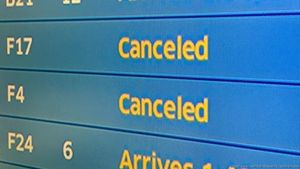Iran stands at a crossroads, its future hotly debated after a cascade of bold reformist demands, surging public protests, and deepening economic and political crises. In a country battered by sanctions, internal dissent, and the aftermath of a brief but bruising war with Israel, the calls for sweeping change are growing louder—even as the ruling elite digs in its heels.
On August 19, 2025, the Reformist Front, once a powerful but now marginalized faction in Iranian politics, released an 11-point statement that has electrified and polarized the nation’s political scene. According to Iran International, the statement called for suspending uranium enrichment, releasing political prisoners, and reining in the power of the Revolutionary Guards. The reformists also demanded reconciliation with the West, an end to the house arrests of Green Movement leaders Mir-Hossein Mousavi and Zahra Rahnavard, and a dramatic scaling back of the IRGC’s role in both politics and the economy.
The timing of this appeal is critical. It comes just weeks after a 12-day war with Israel exposed vulnerabilities in Iran’s defenses and left its international standing weakened. The country faces mounting inflation, persistent power and water shortages, and a population weary from years of economic hardship. European governments, frustrated by stalled nuclear talks, are threatening to trigger the UN’s snapback sanctions mechanism, a move that could plunge Iran even deeper into recession.
Hardline outlets wasted no time in condemning the reformists’ proposals. The influential Kayhan daily branded the statement as “capitulation,” while the IRGC-linked Tasnim News Agency warned of a “Gorbachev moment” that could unravel the Islamic Republic itself. As Iran International reported, the backlash underscored just how sensitive the reformists’ demands are, striking at the very pillars of Supreme Leader Ali Khamenei’s power structure.
Alex Vatanka, an analyst at the Middle East Institute, explained to Iran International that reformists are testing the waters precisely because they sense the Islamic Republic is “under strain like never before.” Yet, he cautioned, “reformists don’t have the street behind them.” Vatanka insisted the letter should not be dismissed as mere symbolism but seen as a signal of intent: “This is just the beginning.” Without broad public support, however, their leverage remains limited.
Others see the reformist statement as part of a broader game of succession politics. Historian Arash Azizi described it as a maneuver in anticipation of a “post-Khamenei world,” with rival factions jockeying for influence after the 85-year-old leader. “They know these demands won’t be met tomorrow,” Azizi told Iran International, “but they want to shape what comes next.” He called the statement “a mini earthquake,” significant not for its immediate impact, but for how it signals the reformists’ vision for Iran’s future.
Yet, as Behnam Ben Taleblu of the Foundation for Defense of Democracies pointed out, such statements may resonate more in Washington than in Tehran. “This is politically significant in the sense of who said it, but it won’t have impact,” he told Iran International. Years of unmet promises have left many Iranians skeptical of the reformist project.
On the streets, the mood is restive. Protests ignited by the death of Mahsa Amini at the hands of the morality police have spread to over 150 cities, NCRI reports. Women lead the chants, calling for “Down with Khamenei” and “Death to the Dictator,” their demands for women’s rights now inseparable from the broader push for regime change. The protests have taken on a life of their own, fueled by frustration over daily hardships and a sense that the ideological divide between the regime and the people has never been wider.
Meanwhile, the regime has responded with a surge in executions, echoing the darkest chapters of the 1980s. According to NCRI, the authorities have begun destroying Section 41 of Behesht Zahra Cemetery, the burial site of thousands of People’s Mojahedin members executed in the 1980s. Families of political prisoners, such as Akbar Daneshvarkar, have been left in the dark about the fate of their loved ones. “We have had no news from Shahrokh since that date, and other families are the same,” his sister said in an emotional video appeal. “My father is gravely ill, and my mother suffered a heart attack after hearing her son had disappeared in prison. Even hearing her son’s voice has been denied to her.”
Youth, too, have taken action. On August 15, 2024, rebellious young Iranians attacked regime centers, including Basij forces of the IRGC, protesting over power and water shortages. Their slogan—“To have water, electricity, and freedom, one must set fires”—underscores the depth of their anger and the breadth of their demands.
Internationally, Iran’s actions are drawing sharp rebuke. Fourteen Western countries recently issued a joint statement condemning Tehran’s campaign of assassination and intimidation against dissidents, journalists, and Jews in Europe and North America. As NCRI notes, the signatories pledged intensified intelligence and security cooperation to counter what they called “blatant violations of national sovereignty.”
President Masoud Pezeshkian has acknowledged the scale of the crisis, telling media representatives that Iran faces a “comprehensive deadlock” in both domestic and international affairs. “Today we are facing an undeniable and serious crisis that cannot be ignored… We have problems in water, electricity, gas, and inflation. Where do we not have problems? Today we are in a situation of compulsion, and we have no choice,” he admitted, as reported by Fars News Agency.
The economic outlook is equally grim. As of August 17, 2025, 80% of pharmacies in Iran are on the verge of bankruptcy, with unpaid debts exceeding $322 million, according to Shahram Kalantari, head of the Iranian Pharmacists Association. The bread crisis, too, persists, with government mismanagement fueling widespread dissatisfaction from farmers to bakers to consumers. Bread, a symbol of culture and survival in Iran, has become an emblem of the government’s failure to deliver on its promises.
In the diaspora, Iranians and their supporters are rallying in cities like Gothenburg, Stockholm, and Oslo. On August 16, 2025, crowds gathered to support Maryam Rajavi’s Third Option and the National Council of Resistance of Iran as a democratic alternative, while also raising the alarm over the imminent execution of five political prisoners transferred to Ghezel Hesar Prison, notorious for mass executions.
Whether the reformists’ bold letter marks a genuine turning point or simply another chapter in Iran’s long history of thwarted change remains to be seen. What is clear is that Iran’s future is being contested on every front—by reformists, protesters, prisoners, and a society increasingly unwilling to accept the status quo.




